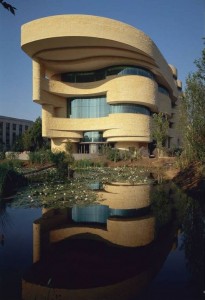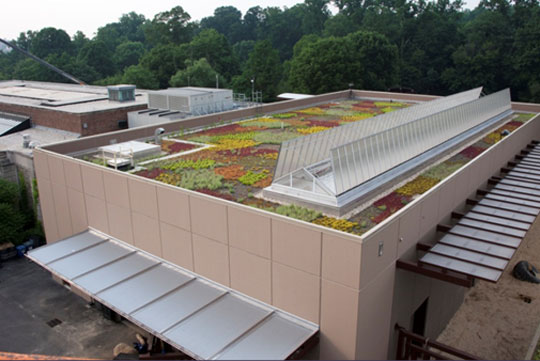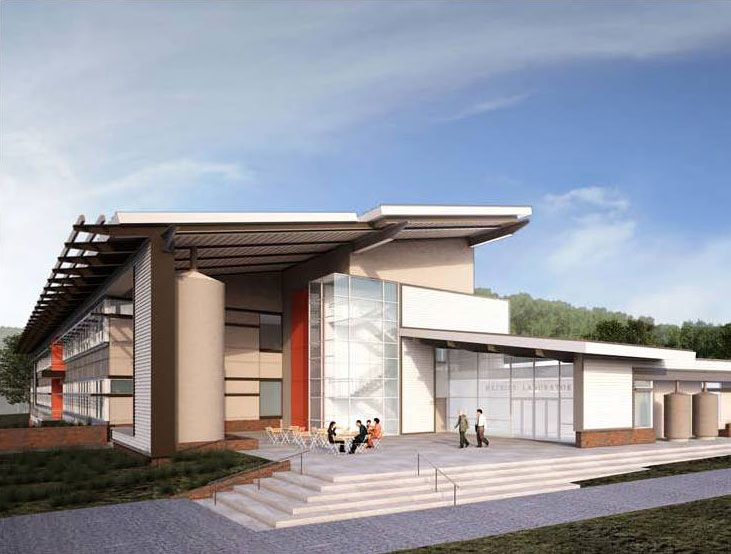A sustainable Smithsonian
Limits to Growth
Concerned about the world’s looming challenges, in 1968 opinion leaders from business, science and politics formed a group called The Club of Rome. Four years later they published an influential report called The Limits to Growth, which outlined the inherent dangers of expansive growth coupled with dwindling resources. On March 1, the Smithsonian Institution’s Consortium for Understanding and Sustaining a Biodiverse Planet hosted a symposium called Perspectives on Limits to Growth: Challenges to Building a Sustainable Planet, to assess how much progress has been made in the 40 years since the report first came out. In October, another symposium, The Anthropocene: Planet Earth in the Age of Humans will address what may be on the horizon.
The numbers are daunting. In 1800, less than 1 billion people lived on Earth. Today, more than 7 billion populate the planet, and the U.N. estimates that by 2050, the global population will hit 9.3 billion. The rapid development of countries with huge populations has led to a voracious appetite for fuel, food and water. As a result, more pollutants are being added to our air and water, forests and topsoil are disappearing, transportation and infrastructure are overburdened, and climates are changing. What can we do about this at the Smithsonian?
What Sustainability Means to Us

The American Indian Museum is the first Smithsonian museum to be awarded LEED-EB Silver Certification.
When Secretary Joseph Henry issued an 1862 memo to Smithsonian employees directing them to reuse and resell paper for profit, he recognized that we could all do our part to eliminate waste. Reduce, reuse, and recycle: these are the types of initiatives that most people associate with sustainability. Thanks to the leadership of the Smithsonian Executive Committee on Sustainability, they have certainly been central to our efforts. In 2011 alone, the Office of Facilities Management and Reliability recycled more than 1,200 tons of Smithsonian waste. Since 2005, the Smithsonian has reduced petroleum consumption by 35 percent and increased alternative fuel use by 550 percent. The Natural History Museum is improving water management and now has cisterns for rainwater capture and re-use. The Air and Space Museum and the Udvar-Hazy Center are saving energy through more efficient lighting. These efforts are all important. But we view sustainability much more comprehensively.
The Role of Conservation
At the Smithsonian, one of our obligations is to be stewards of many things: precious artifacts and archaeological treasures; 43,000 acres of land around the world; hundreds of endangered species. We preserve and protect them for future generations. The Smithsonian’s Museum Conservation Institute takes care of our collections using the most advanced instrumentation and scientific techniques. Our strategic plan’s Grand Challenge—Understanding and Preserving the Biodiversity of the Planet—is also vital to our sustainability goals. This initiative is helping conserve our most precious living resources: the National Zoo and the Conservation Biology Institute work to save endangered species; Natural History’s collaborative Encyclopedia of Life project educates young people about the delicate balance of Earth’s rich diversity of life; Tropical Research Institute scientists work diligently to preserve the world’s tropical rainforests; The Smithsonian Institution Global Earth Observatory and Marine GEO examine the effects of climate change and biodiversity on land and in the ocean. When exotic flora and fauna die out, we don’t simply lose their beauty and wonder. We may also lose cures to disease and other keys to understanding the human condition. Once species are extinct, important discoveries are lost forever.

Green roof and operable skylights for natural daylight and ventilation on the completed barn for Elephant Trails at the National Zoo.
The Long View
It has been said of the Smithsonian that we are in the “forever business.” That is why it is so crucial to serve our visitors, not just for the ensuing decades, but for centuries to come.
The Harvard Business School recently conducted the first comprehensive study which attempted to quantify sustainable business practices. They found that the companies that had implemented sustainability as a core part of their companies were more profitable than those who hadn’t. Quite simply—sustainability is good for the bottom line.
We have a unique opportunity to reap long-term benefits from sustainability because we aren’t beholden to quarterly profits. By taking the long view, we can be a stronger and more durable Institution by making decisions that will pay for themselves over time. It’s why we are putting nearly a billion dollars into construction and renovation, and doing it with sustainability at the forefront.
The U.S. Green Building Council uses rigorous criteria to determine if a building can receive Leadership in Energy and Environmental Design certification. Through sheer determination, the American Indian Museum transformed a non-LEED building into our first LEED-certified facility. Our 19th museum, the National Museum of African American History and Culture, scheduled to take its place on the National Mall in 2015, is expected to be gold-certified LEED-NC (new construction). The National Zoo has converted its fuel pumps to emission-reducing biofuel and installed stormwater runoff-reducing roofs. The Natural History Museum is helping to determine best water management practices. The Environmental Research Center’s Mathias Lab will contain solar panels, an array of deep geothermal wells, and a wastewater reclamation system. By building and renovating for the long term, we are realizing the practical benefits of sustainability right now.

Architect's image of new Mathias Lab at the Smithsonian Environmental Research Center, complete with rain cistern on porch and wetlands to the left. (Image courtesy Ewing Cole)
The Smithsonian’s Role
When I was installed as the 12th Secretary of the Smithsonian, I pledged that wherever the Institution has a footprint or a building, we would be committed to sustainability. Many of you rose to that challenge with passion and determination, including the Office of Facilities Management and Reliability recycling task force that produces the newsletter Sustainability Matters. The efforts of individuals, museums and research centers have driven our progress toward becoming a more sustainable Institution. But only by working as a unified Smithsonian can we reach our destination.
The 30th anniversary update of The Limits to Growth noted, “Humanity cannot triumph in the adventure of reducing the human footprint to a sustainable level if that adventure is not undertaken in a spirit of global partnership.” The Smithsonian’s presence in nearly 100 countries gives us tremendous convening power. We can not only explain sustainability’s benefits, but mobilize political leaders and inspire our visitors to put it into action. We must use this power, because— economically, environmentally and ethically—sustainability truly does matter, not just to us, but to our children and grandchildren. Doing right by them is our solemn responsibility. That has always been at the heart of the Smithsonian, and it always will be.
Posted: 5 March 2012
- Categories:



